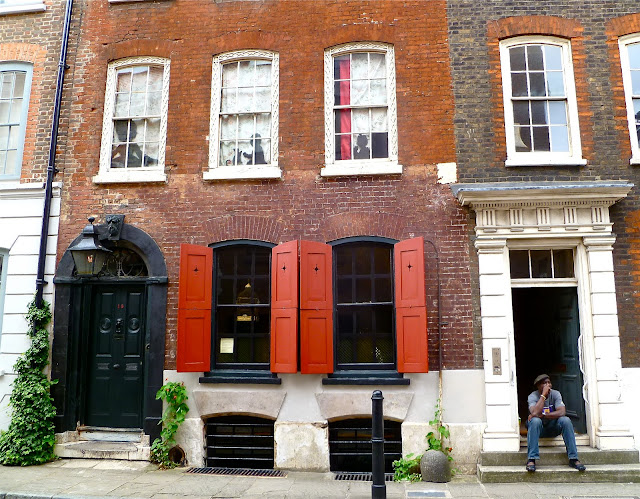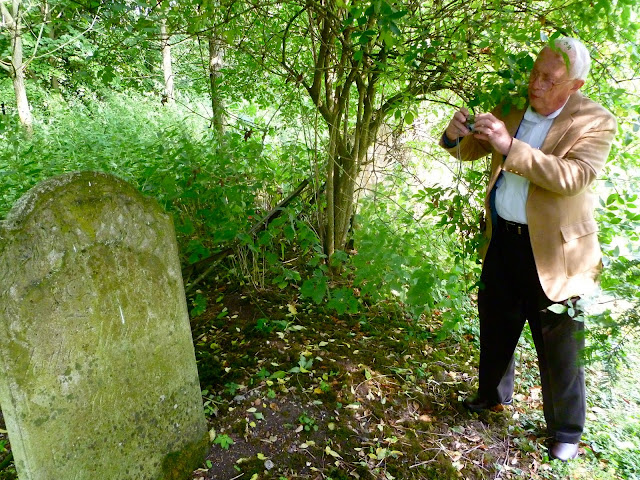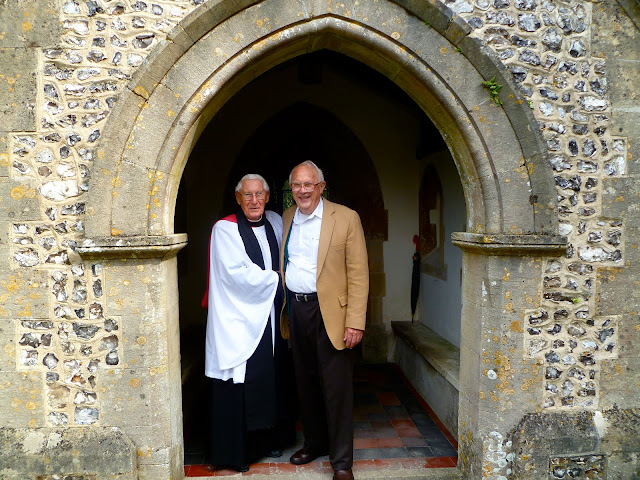 |
| Arundel Castle. Click for a larger view |
A selection of writings, speeches, photographs and events as well as some of my favourite literary passages.
Monday, 23 August 2010
Wednesday, 18 August 2010
Coventry's Awe-Inspiring Cathedral II
I was fortunate enough to make another visit to Coventry to hear a talk at The Herbert Art Gallery and Museum and have time to visit the new Cathedral when the sun was shining. Not everyone likes the new building's exterior, but no one can fail to be moved by the awe-inspiring atmosphere within it. I have mentioned some of the modern masterpieces that beautify the interior elsewhere - the Sutherland Tapestry, the Baptistry Window, the Beyer tablets and others, but with sunshine was able to see them again in a fresh light. Click the heading for some more photos.
See Coventry's Awe-Inspiring Cathedral
Coventry Cathedral
An Inland Voyage at The Herbert Art Gallery and Museum
Stephen gave a fascinating talk on Robert Longden's work in the gallery at The Herbert displaying some 40 of his best surviving photographs, explaining their history and the scenes depicted. Particularly moving was the presence at the talk of several of the children shown by Longden as living on the barges, some of who spoke of their hard but happy lives on the water before the canals were nationalised and their way of life ended.
Click here for a description of the exhibition by a canal enthusiast and the heading for some more photos from the talk
Tuesday, 17 August 2010
Travels in Hampshire and Berkshire
On Sunday, I met an old friend, Father Frowin Reed and his father Bill, who had come over from Tennessee to stay while Frowin looked after the Roman Catholic parish of Didcot. Bill Reed and I drove down to Newbury, a town he had visited last in 1965 when he was serving in the US Army, and then on to Litchfield and Dunley.
Bill's family has ancient connections with Litchfield. He had a particular interest in one Nicholas Webber who was vicar of Litchfield and died in 1657, and had a copy of his will which contained familiar local names such as Kingsmill and Cold (now Cole) Henley. Bill searched the graveyard for signs of him and we found one gravestone marked NW, but the date - 1706, was a generation or two too early to have been his. But another ancestor by the name of Biggs who had eluded search so far, turned up in the church itself when we opened a newly presented book of Psalms and inside was the inscription 'In Memory of Lilian Biggs 1917-2007'.
Friday, 13 August 2010
Lucie Winterson's Exhibition
 |
Thursday, 5 August 2010
Favourite Blogs - The Master Draper Blog

'I think Master Draper Blog is the first time that any master of a London Livery Company has ever tried to describe his/her year leading one of these fascinating organisations.
The Drapers' Company is one of the older livery companies and because of the importamce of the finished wool cloth trade to London, and the wider English economy, five hundred years ago we are ranked as the third company in seniority.
Today there are over a hundred livery companies in London focussed on an extrordinarily wide range of trade related and charitable activities.
Our website www.thedrapers.co.uk gives a good overview of what we do across a wide range of charitable activities.
I hope my blog will describe a year where ancient ceremonial, promoting a wide range of charitable activity and maintaining a great organisation to continue its proud traditions into the future will blend together to create an interesting insight into one of London's great institutions'.
I am proud that the Master of 'my' Livery Company has taken up this very modern challenge. Already his posts are revealing details of the Company's work that the Liverymen themselves have little current knowledge about and are very glad to learn. He should also help to dispel some of the unwonted mystique surrounding these purely charitable institutions as well as encourage deserving beneficiaries to find willing sources of funding in these straitened times. But it's going to be a hard act for his successors to follow!
Tuesday, 3 August 2010
Favourite Blogs - Spitalfields Life

Dennis Server's House at 18 Folgate St
Spitalfields Life is a captivating blog by an unnamed 'gentle author' who introduces himself evocatively thus:
'In the midst of life I woke and found myself living in an old house beside Brick Lane in the East End of London.
Spitalfields is the oldest industrial suburb in London. It was already densely peopled and “almost entirely built over,” in 1701 when Lambeth was still a marsh, Fulham a market garden and Tottenham Court Rd a green. It owes its origins to those refugee traditions which, in defiance of the Elizabethan building regulations, and to escape the restrictions of the City Guilds, settled in Bishopsgate Without and the Liberty of Norton Folgate.
Spitalfields is a junction between, on the one hand, a settled, indigenous population, and on the other, wave upon wave of newcomer. Even when it was known as ‘The Weavers’ Parish,’ it was still hospitable to many others – poor artisans, street sellers, labourers among them. In the late nineteenth century Spitalfields was one of the great receiving points for Jewish immigration and the northern end of the parish provided a smilar point of entry for country labourers. There was a whole colony of them at Great Eastern Buildings in the eighteen eighties, working as draymen at the brewery, and another at the Bishopsgate Goods Station. This ‘mixed’ character of the neighbourhood is very much in evidence today.
Spitalfields Market – threatened with imminent destruction by a coalition of property developers, City Fathers, and conservationists – is almost as old as Spitalfields. It was already in existence when the area was still an artillery range. In John Stow’s ‘Survey of London’ (1601) it appears a trading point “for fruit, fowl and root.” A market sign was incorporated in the coat of arms for the Liberty of Norton Folgate in Restoration times, and the market’s Royal Charter dates from 1682. The market, in short, preceded the arrival of the Hugeunots and has some claim to being Spitalfields’ original core. The market continued as a collection of ramshackle sheds and stalls until it was transformed, in the 1870s, by Robert Horner, who bought the lease of the land from the Goldsmid family in 1875. Horner was a crow scarer from Essex who, according to market myth, walked to London, became a porter in the market and eventually got a share in a firm. Ambitiously, he set about both securing monopoly rights for the existing traders, and replacing the impromptu buildings with a purpose built market hall – the “Horner” buildings which today is the oldest part of the market complex.
The older, eastern portion of the market is the direct product of Robert Horner’s vision of his own situation. It is built in the manner of the English Arts & Crafts movement. On its own terms, the old market is a pleasing piece and a worthy addition to the diversity of Spitalfields. Its rusticated archways on the Commercial St facade and the repeated peaks of the roof with their smallish sash windows lend a clearly Victorian flavour to Commercial St, which was largely a Victorian venture anyway. Inside the market it is a vintagely Victorian hall of glass and iron of unassuming beauty, even more so when at work, then its true worth as a genuinely functioning piece of Victorian space is revealed. Like St. Pancras in a different way, it has an element of the museum and an aesthetic that overlays the original construction upon utilitarian principles. Most of all the old market appears as a peculiarly English space. An effect that is heightened by the lavish use of ‘Wimbledon’ green. It is that deep traditional green that characterises English municipal space and that, in this case helps to marry the market to the discordant additions of the late 1920’s and to give distinction to the territorial boundaries of the market that have been historically more fluid.
The old market is a celebration of trade, a great piece of Victorian working space, not only of great historical value itself, but contributing to the visual manifestation of the historical development of the whole of Spitalfields. It is a worthy layer in an area that grew by a sort of architectural sedimentation. Hawksmoor’s Christ Church, the Huguenot fronts of Artillery Passage, the Georgian elegance of Elder St and the smaller houses of Wilkes St and Princelet St, the mid-Victorian utility of the Peabody Buildings, the rustic character of the old market, the twentieth century neo-classicism of the Fruit Exchange and several examples of a more unspeakable modernity are some among many accretions which contribute to make Spitalfields what it is. The most perfect example of a palimpsest in which diversity rather than Georgiana or Victoriana represent the true nature of the area.
The character of a district is determined not by its buildings, but by the ensemble of different uses to which they are put, and, above all, by the character of the users. It should be obvious to all but the self-deceived, that to stick an international banking centre in the heart of an old artisan and market quarter, a huge complex with some six thousand executives and subalterns, is, to put it gently, a rupture from tradition. The whole industrial economy of Spitalfields rests on cheap work rooms: rentals in the new office complex are some eight times greater than they are in the purlieus of Brick Lane, and with the dizzy rise in property values which will follow the new development, accommodation of all kinds, whether for working space or home, will be beyond local people. The market scheme will mean a social revolution, the inversion of what Spitalfields has stood for during four centuries of metropolitan development.
The fate of Spitalfields market illustrates in stark form some of the paradoxes of contemporary metropolitan development: on the one hand, the preservation of ‘historic’ houses; on the other, the wholesale destruction of London’s hereditary occupations and trades and the dispersal of its settled communities. The viewer is thus confronted with two versions of ‘enterprise’ culture: the one that of family business and small scale firms, the other that of international high finance with computer screens linking the City of London to the money markets of the world.
Raphael Samuel 22nd July 1988
Thursday, 29 July 2010
Favourite Places

The Test at Fulling Mill, Whitchurch. This stretch of the river and the Mill was once owned by my step-grandfather. Click here for his granddaughter's reminiscences








